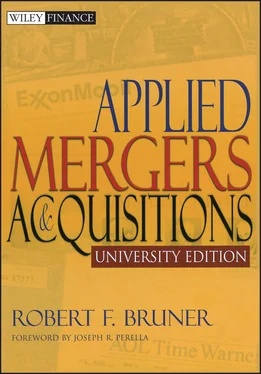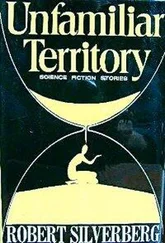To explore some of the problems of stability in executive surveys about M&A, I polled 50 business executives via the Internet. As with other surveys of this type, no effort was made to ensure representativeness or reduce bias, thus limiting our ability to generalize the results to all executives or all M&A deals. Nevertheless, the findings offer important insights about M&A profitability.
First, the survey considered all respondents, and asked their opinion about the percent of all M&A deals that create value and meet their strategic objectives. The resulting distributions of opinion were quite wide. But on average, the respondents said that only 37 percent of deals create value for the buyers. Even worse, the sample believes that only 21 percent of the deals achieve the buyers’ strategic goals. These findings are similar to results of some other surveys of executives.
Next, the survey focused only on those respondents who had been personally involved in one or more M&A transactions, and asked them to comment on their own deals. In essence, this created a subsample of possibly better-informed respondents. For this subset, the results reversed themselves:
Fully 58 percent of the informed respondents believe their own M&A deals created value; 51 percent believe their deals achieved their strategic goals. In contrast, only 23 percent believed their deals did not create value; 31 percent believed their deals did not achieve their strategic goals. The remaining respondents either did not know the results of their deals or concluded the results were mixed. EXHIBIT 3.12 Sample of Practioner Studies and Their Key FindingsSource and DateSample SizeSample PeriodFindingsJohan Brjoksten, 1965 (cited in Lajoux and Weston, 1998)5,409 manufacturing mergers1955–196516% were a failure financially, strategically, technologically.McKinsey & Co., 1987 (cited in Lajoux and Weston, 1998)116 firms61% failed to earn back the cost of equity.PA Consulting (cited in Lajoux and Weston, 1998)28 “major acquirers in banking”1982–198880% of acquisitions had a negative effect on the acquirer’s share price.McKinsey & Co. (cited in Fisher, 1994)N/AA 10-year periodOnly 23% of transactions recovered the costs incurred in the deal, much less any synergies.Mercer Management and Business Week, October 1995 (cited in Lajoux and Weston, 1998)150 deals of size $500 million or greater1990–1995Measured total returns to shareholders over a three-year period. 17% of the deals created substantial returns. 33% created marginal returns. 20% eroded some returns. 30% substantially eroded shareholder returns.248 acquirers purchasing a total of 1,045 targets, compared to 96 nonacquiring firms1990–199569% of nonacquirers produced returns superior to their industries. 58% of the acquirers produced returns superior to their industries.David Mitchell of Economists Intelligence Unit, 1996 (cited in Lajoux and Weston, 1998)Survey of executives in 150 companies1992–199630% called their mergers “successful, worth repeating.” 53%, satisfactory, not worth repeating. 11% unsatisfactory. 5% disastrous.Kenneth Smith in research for Mercer Consulting, 1997, and for Mitchell Madison Group 1998 (cited in Lajoux and Weston, 1998)215 large transactions, valued at $500 million or moreCompared acquirers’ performance in 1980s deals versus 1990s deals52% of 1990s deals were outperforming their industry standards, compared to 37% of 1980s deals.Michael Mayo, Lehman Bros, (cited in Lajoux and Weston, 1998)Six banksN/AAcquirers’ stock prices declined an average of 10% within one week of the announcement, but all recovered within two months.Andersen Consulting (cited in Bahree, 1999)Large mergers completed between 1994 and 19971994–199744% of all large mergers fell short of initial financial and strategic expectations. 70% of oil mergers fell short.KPMG LLP (Kelly, Cook, and Spitzer, 1999)700 “of the most expensive deals”1996–1998Interviews with 107 executives revealed that 82% believed their deals were “successful,” yet analysis showed that “only 17% had added value to the combined company, 30% produced no discernible difference, and as many as 53% actually destroyed value. In other words, 83% of mergers were unsuccessful in producing any business benefit as regards shareholder value.” (Page 2)Chaudhuri, Tabrizi (1999)53 acquisitions by 24 high-tech companiesN/ASuccessful acquirers were differentiated from unsuccessful acquirers by a focus on capabilities. 11 were “considered successful by both sides.” 9 were clear failures. 33 provided zero or slightly positive but disappointing returns on investment.Booz-Allen … Hamilton 2001 (Adolph et al., 2001)Sample size not reported1997–199853% of all deals failed to deliver expected results. Of the part of the sample consisting of mergers aimed at exploiting scale economies, the failure rate was 45%. Of the part of the sample with “strategic motivations” (such as “add capabilities” or “new business model”) the failure rate was 68%.
The strength of the respondents’ view about all M&A was inversely related to their view of their own deals: The better they felt about their own deals, the more they condemned M&A results in general. On the measure of value creation of deals (own deals vs. all deals), the responses were correlated –42 percent, a strongly negative degree of association for work in social science. But on the dimension of meeting strategic objectives, the correlation was even more negative, –72 percent.
This survey illustrates the important influence of one’s frame of reference on survey responses. The effects of facts and impressions differ. Where the respondents were better informed (e.g., their own deals, with firsthand information), M&A seemed to pay. But for the broader judgment, the respondents fell back on a very different opinion. There is one other explanation for the disparate findings: For reasons of ego executives tell the world nicer things about their own deals than about the deals of others. Either way, one’s frame of reference (informed by information or weighted by ego) shapes a very different and more optimistic view about M&A profitability.
The practitioner should evaluate critically the findings reported by consultants’ surveys and discount those studies that hedge in answering the following kinds of questions:
Is the study based on a large, representative sample?
Were the survey questions framed in a way to avoid coaching the respondent to give a desired answer?
Was this a survey of opinions or facts? Did the survey probe the respondent’s factual knowledge of actual transactions?
Was the response rate reported?
Was the methodology rigorous and so clearly described that it would be possible to replicate?
FINDINGS FROM CLINICAL STUDIES
Clinical studies of M&A cases offer insights into the possible origins of the returns experience for outliers. Here are conclusions from some of these studies.
ATT/NCR. Lys and Vincent (1995) examined the 1991 acquisition of NCR Corporation by AT&T. This acquisition decreased the wealth of AT&T shareholders by between $3.9 billion and $6.5 billion. The study offered three explanations for these results. The first was a set of managerial objectives that were not consistent with maximizing shareholder wealth. The second was managerial overconfidence, or hubris. And the third was “escalation of commitments,” a psychological phenomenon that spurs decision makers to move forward despite information to the contrary.
Renault/Volvo. Bruner (1999) examined the failed attempt to merge AB Volvo with Renault in 1993. The attempt temporarily erased 22 percent of Volvo’s market value before Volvo’s board of directors withdrew from the deal. The study suggests that the value destruction was associated with disbelief in merger synergies and with the transfer of control to Renault.
Читать дальше












